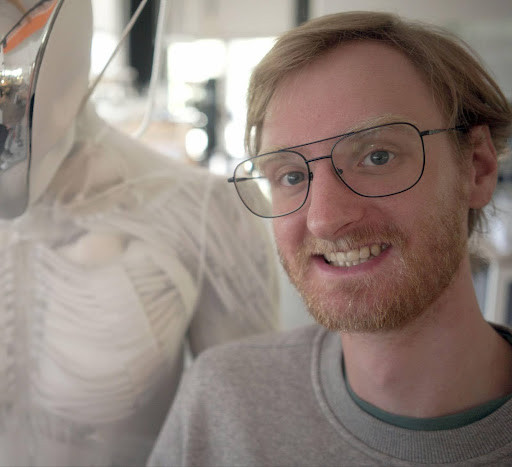Designing Human-Centric Robots: Precision Meets Practicality

Humanoid robotics, once considered futuristic, now stands ready to transform everyday life. Robots designed to closely match human capabilities have the potential to handle tasks ranging from simple chores to specialized and hazardous duties. Achieving true humanoid functionality, however, requires significant progress in mechanics, embedded systems, artificial intelligence, and effective control mechanisms.
Clone Robotics, a pioneering startup in this field, is developing advanced, soft-bodied, musculoskeletal androids designed to interact naturally within human environments. Their ambitious vision involves creating robots that are adaptable, responsive, and capable of becoming integral to daily life.
Central to this mission is Maciej Bakowicz, VP of Software at Clone Robotics, whose career reflects a practical passion for automating repetitive and physically challenging tasks.
From Web Design to Humanoid Robotics
Bakowicz's initial exposure to technology began with web design and web development, long before his formal education. This early phase not only shaped his precise and systematic approach but also instilled in him an appreciation for intuitive, user-centric design.
His professional journey continued at Nokia, where he developed telecommunications software focused primarily on user interfaces and backend integrations. This experience provided him with comprehensive knowledge in software architecture, reinforcing the value of systematic thinking.
"Working at Nokia taught me discipline and structured problem-solving," Bakowicz notes. "Those principles are still fundamental to my robotics work today."
Moving into humanoid robotics was a natural progression for Bakowicz, driven by his goal of utilizing automation to improve daily human experiences. At Clone Robotics, he integrates his expertise in software engineering and user-focused design into practical robotic applications.
Innovations and Practical Solutions
Bakowicz emphasizes reliability and precision as key measures of robotic success. Under his guidance, Clone Robotics recently enhanced their teleoperation system, enabling significantly more precise and dynamic interactions. This updated setup notably improves responsiveness and stability during demonstrations, providing smooth, real-time robotic manipulation.
He also led the development of robust middleware systems designed to efficiently manage robot hardware. His efforts greatly improved performance, scalability, and responsiveness, allowing more sophisticated robotic functionalities.
Another key initiative Bakowicz spearheaded was creating intuitive automation tools to simplify robot demonstrations. These tools empower both technical and non-technical team members to swiftly craft advanced robot motion sequences, greatly enhancing productivity and demonstration quality.
Recently, Bakowicz successfully demonstrated supervised learning for robotic hand control. By collecting precise movement data, he trained an AI model capable of accurately coordinating the hand's multiple joints and actuators simultaneously. "This proved AI can effectively handle highly complex robotic systems, particularly when dealing with limbs like our robotic hand, which involve numerous actuators influencing multiple joints in a highly non-linear manner," he explains.
Additionally, he ensures simulation models provided to researchers are highly accurate. "Reliable simulations are critical," Bakowicz emphasizes. "Accurate models ensure smoother transitions from theory to practical application."
Design-First Approach and Accessibility
For Bakowicz, functionality is just one part of successful robotics; aesthetics and usability are equally crucial. He strongly believes that robotic systems must not only perform tasks effectively but also be visually appealing and intuitive to use. This design-first approach extends to software, resulting in straightforward, accessible tools for higher-level teams, including AI researchers, facilitating their work without unnecessary complexity.
"Things must be beautiful," Bakowicz emphasizes. "This includes the look, the shape, and also accessibility. Clear, simple design makes tools easier to use and encourages innovation across our teams."
Addressing Technical and Ethical Challenges
Integrating mechanical systems, embedded technology, and AI presents significant complexity. Each element has unique requirements and potential for unforeseen interactions. Bakowicz addresses these challenges by developing robust, user-friendly interfaces that facilitate efficient cooperation across multidisciplinary teams.
Ensuring safety and reliability, Bakowicz stresses rigorous sensor monitoring and clearly defined operational parameters. "Close monitoring of temperature, pressure, and positional data is essential," Bakowicz explains. "Without precise oversight, minor issues can quickly escalate into major problems."
Bakowicz also highlights the inherent unpredictability in AI-driven systems. Ensuring that AI systems correctly interpret real-world data and respond appropriately to unexpected scenarios demands substantial preparation, thorough testing, and continuous oversight. "People often underestimate how complex AI integration is," he notes. "It's rarely straightforward."
Furthermore, ethical considerations are paramount. As humanoid robots become increasingly integrated into human spaces, issues of safety, privacy, and reliability become critical. "Ethical robotics requires designing systems that genuinely improve human lives without causing unintended issues," Bakowicz explains. He consistently addresses these concerns to ensure the robots are both practical and socially responsible.
Leadership and Mentorship
In addition to technical roles, Bakowicz actively mentors and coordinates international teams at Clone Robotics. With team members spread across various time zones, available meeting slots are extremely limited, making effective communication and clear explanations essential. "International teamwork requires patience and precision," Bakowicz says. "We must ensure everyone fully understands our objectives, making the best use of every interaction."
Bakowicz fosters a collaborative and innovative work environment, emphasizing continuous learning and creative problem-solving, empowering each team member to make meaningful contributions.
Vision for the Future
Bakowicz's vision for robotics transcends current technological achievements. He imagines robots effortlessly adapting to different tasks through simple software updates, dramatically expanding their roles in society, including hazardous operations, caregiving, and precision tasks.
Ultimately, Bakowicz seeks to reshape public perceptions of humanoid robotics, advocating for robots that are approachable, visually appealing, and highly functional. His dedication to meticulous research, thoughtful design, and practical impact highlights his commitment to excellence.
Maciej Bakowicz exemplifies a new generation of robotics professionals, combining technical expertise, innovative thinking, and strong leadership. His ongoing work continues to shape the future of humanoid robotics, significantly enhancing practical applications and everyday life.
© Copyright IBTimes 2025. All rights reserved.




















